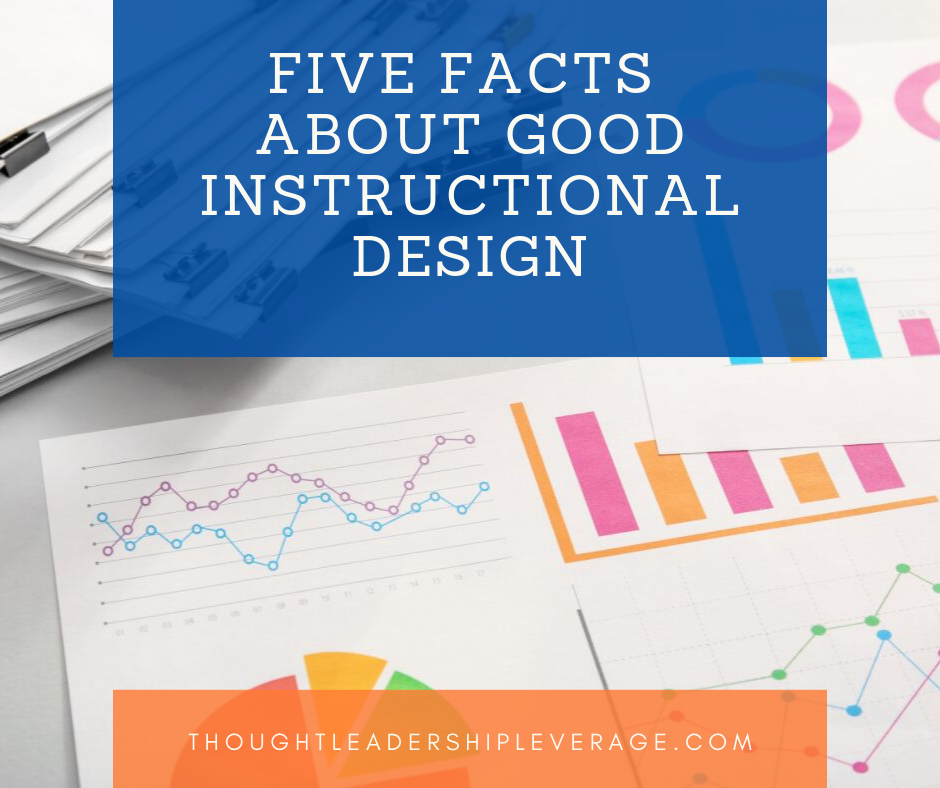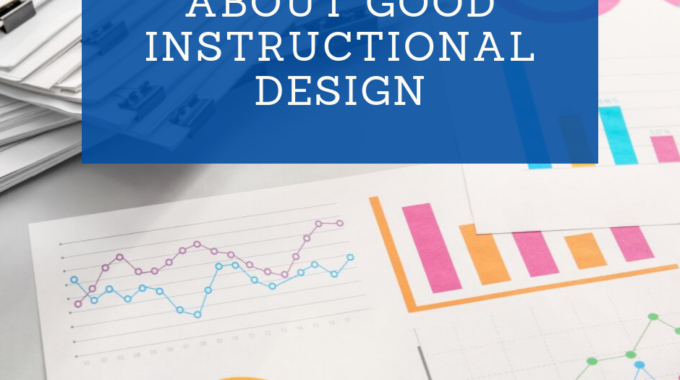Hey, thought leaders! I want to tell you about a powerful approach to thought leadership…
Five Facts About Good Instructional Design
Thought leaders are great thinkers, but it takes more than amazing ideas to be a great teacher. A lot of people in the content business assume that coming up with business solutions is the hard part, and getting people to learn and utilize them – well, that’s a comparative cake walk. Right? Wrong. Here are five facts about good training that you need to know.
1. Most thought leaders suffer from the “curse of knowledge.”
You love to tell people about your thought leadership, but you know your ideas from the inside out – and a learner is just beginning to scratch the surface! Thought leaders think deeply about their content, and it can be hard for them to simplify and focus on the basics. That’s why they need instructional designers. Instructional design is a skilled profession, with a deep understanding of teaching techniques, learning psychology, and exercise design.

2. You can’t build a one-day course over a weekend.
A standard guideline is that it takes 40 hours of work to build one hour of an in-person workshop. That means a full day course, 6 1/2 instructional hours, requires about 240 hours of work to design and develop. That metric may seem shockingly high, but it’s been validated by decades of learning professionals.
3. Most facilitators are not instructional designers.
Just because someone is great at teaching a course doesn’t mean they’re good at designing one. A good parallel would be asking a carpenter to devise the architecture of your house. The carpenter has specialized skills, they understand their job well, and they may be very talented at building – but they’re not an architect, and they don’t have the knowledge and experience it takes to formulate a house from the ground up.
4. Great graphic design isn’t the same as great instructional design.
It isn’t about a pretty deck, colorful workbook, or flashy brand logos. Graphics should enhance the learners experience, but it’s more important that they walk away remembering and using your content. No one ever said, “My life changed because the workbook was beautiful.”
5. To learn, people need to feel safe making mistakes.
People learn best through trial-and error. Building a great training course means knowing how to create a space that allows for mistakes – and even encourages them. Some people get self-conscious and don’t want to be seen being less than excellent – especially at work. To learn well, they need a safe space where they won’t be judged; where they can fail, and still feel good about themselves.
The best training changes people – behaviorally, and cognitively. If you don’t know good instructional design, you could create a course that’s “textbook perfect” and still miss the mark for a business’s needs. Stop and think, “At the end of this course, when my learners go home, how do their actions change? How does the business change? How do their thoughts change?”
Those are the questions that great instructional design must address.




